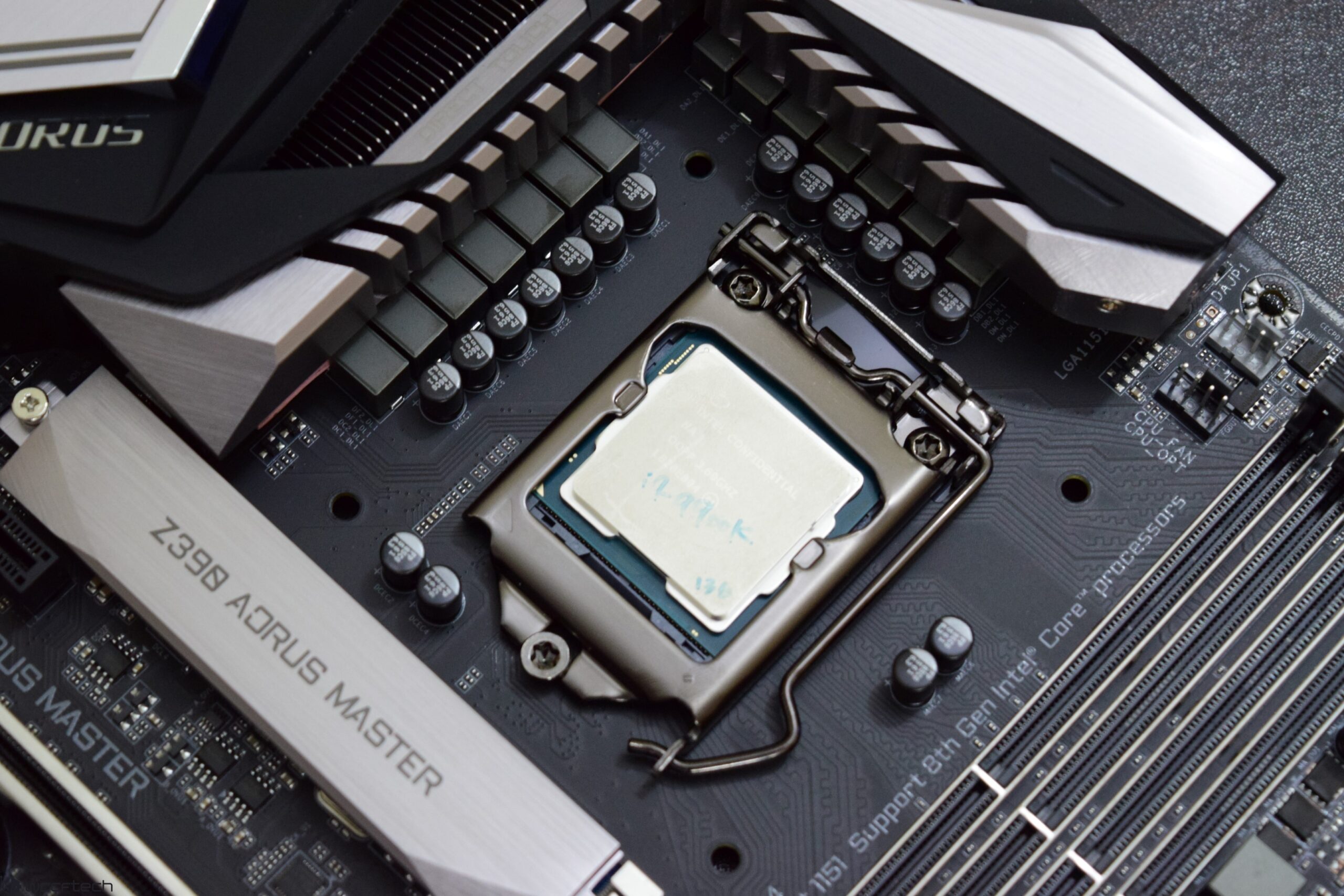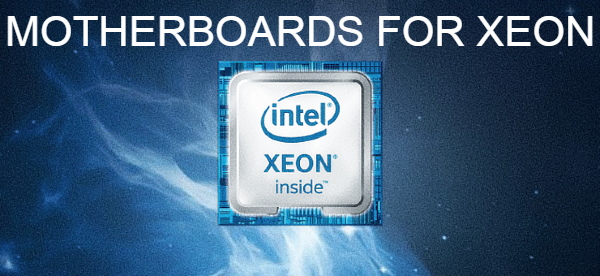Lastly, keep in mind that the stores that offer these xeon motherboards are renowned for their reliability and trustworthiness.
The Best Motherboards For Intel Xeon Processor
Below is the list of top good motherboard which you can use for intel xeon processor.
ASUS AMD AM4 Pro
About this item
- 3 PCIe 4. 0 x16 Slots with optimized lane arrangement of 3-Way x8/x8/x8 to accelerate an increasingly diverse array of workload
- Reliable and responsive ECC memory suitable for Mission critical task
- ASUS control Center: A software utility equipped with dual GbE LAN for out-of-band management for centralized and cost-saving it management
- Ultra-fast storage: up to 64bps Dual M. 2, U. 2, Plus up to 10Gbps back-panel USB 3. 2 Gen 1 with Type-A and Type-C ports
- Ultra-efficient VRM heatsink: metal-fin-array design maximizes surface area for heat dissipation to enable unthrottled performance
- Please ensure your BIOS is up to date if installing a compatible Ryzen 5000 series CPU. Visit ASUS site search by motherboard model name, click on “Support” tab, Drivers and Tools, then BIOS & Firmware to download the latest BIOS.
ASUS Z11PA-D8 Server
About this item
- Powered by Intel Xeon Scalable Platform features 8x DIMM slots supporting 3DS ECC RDIMMS or LRDIMMS up to DDR4-2666 and 4x Gigabit LAN ports with a dedicated management LAN
- CEB Motherboard with ATX Mounting Holes for flexible mounting to fit in PC Chassis, Tower, or Rack systems with 12″ x 10.5″ compact size ideal for SMB Group, Print/File/Mail
- Dual onboard OCuLink provides an efficient port-to-port connection with most OCuLink-supported NV Me devices, eliminating the need for PCIe transaction cards
- Dual Integrated M.2 (NGFF) 22110 slots support additional OS storage and PCIe 3.0 x4 bandwidth for 5.3X faster boot speeds than 6 Gb/s SATA III
- Four mini-SAS HD support up to 16x SATA ports for high-speed 6Gb/s connectivity with external devices and cleaner cable routing
ASUS LGA1151
About this item
- Intel mehlow platform Mini ITX motherboard for Intel Xeon Series processors LGA1151 socket featuring M.2, USB 3.1, support for ECC/Non-ECC DDR4 UDIMM and Intel Octane Memory
- Dual Intel I210AT Gigabit Ethernet with teaming support and additional dedicated management port
- Flexible NVMe storage options via high-speed mini-sas HD connections and port-to-port OCuLink
- Tpm-m 2.0 Ready with a 14.1 TPM header to securely store keys, digital certificates, passwords and data
- Complete IT Infrastructure Management with in-band ASUS Control Center providing a complete server management solution reducing IT operating costs with features like remote BIOS updating, monitoring multiple systems via mobile device, and one-click software updates/dispatching
Our tips for buying the best xeon motherboard of 2021
To start with, you need to stop impulse buying. Be reasonable – do several checks before validating your cart, check out our comparison of the best xeon motherboards for accuracy, and feel free to exchange with sellers as well.
The following tips will help you to buy xeon motherboard at the best price, and in general to do good business on the Internet in 2021, no matter what product you want.
The motherboard is the most complex part of the computer. The motherboard market confuses many users. Some get the cheapest.
Others spend more money on the motherboard than they did on the processor. See what to look for to buy the best motherboard for your needs, without missing features, but also not to give extra money for no reason.
What is the importance of the parent market
The motherboard is the basis of the computer. It is the printed circuit board (PCB). All other subsystems are installed on it: processor , RAM , and expansion cards.
In addition, the motherboard incorporates a number of devices. These include the sound card, network card, SATA controllers for connecting discs, USB controllers for peripherals, and more.
The purpose of the motherboard is to power all the subsystems through the power supply , as well as to undertake the seamless communication between them.
The motherboard also dictates which processor models we can put in, how much total RAM, what kind, and at what frequency , if we can overclock, and other important details about our system.
To see all the available motherboards for the Greek market, and to compare their features, we can visit Best Price .
There we will find the stores with the lowest prices and the best availability, so that we can immediately choose the right motherboard for our build.
Socket and chipset
The socket and chipset determine exactly which processors we can install on the motherboard.
If we choose the wrong socket or chipset, the computer will not even start. We will have to either replace the motherboard or the processor with a compatible model.
The motherboard socket is the “case” on which the processor is installed. Every modern processor is compatible with a single type of socket.
There is absolutely no compatibility between different sockets. It is not possible for an Intel processor for an LGA 1200 socket to fit into a motherboard with an LGA 1151 socket, or vice versa.
The main reason is that different sockets have different numbers of pins to connect to the processor.
In the distant past, in the days of Pentium II, III, and 4, there were adapters for different sockets. This tactic, however, has been completely abandoned for over 15 years.
The most recent case of combining different sockets was in 2004. The Intel Xeon for Socket LGA 771, a server-specific processor, could be installed on a desktop motherboard with an LGA 775 socket.
In the Intel’s Core CPUs are great for mid-level and high level computer systems and a few high-end server PCs and workstations, but we advise that, the intel’s Xeon CPUs are the simplest processors for the server PCs and therefore the workstations running data-intensive applications.
But while deciding the proper Intel CPU for our motherboard is a difficult process, which comes with the quantity of confusing questions.
Does one need the error-correcting code( ECC) cache that Xeon processors offer? Is that the intel’s i9 processor is healthier than the Xeon’s processor? Are higher core counting genuinely better? Does one need one or two CPUs? How numerous PCIe aisles should the CPU or CPUs support?
These are questions that we’re happy to answer during this comparing of Intel processors.
But first, let’s reassess server motherboards and their relationship with CPUs.
Photo: Trenton Plan’ SSP8 268 server motherboards, ended with dual Xeon CPUs and other rugged components
What is a server motherboard ?
A server motherboard is that the primary card that mansions a server’s main factors. This includes the central processing unit( CPUs ), baseboard management controller( BMC ), Peripheral Component Interconnect Express( PCIe) slots, remember, input/ output ports and other components.
Like the motherboards found in most consumer-level laptop and microcomputer, server motherboards are available in an exceeding form of different use influences, like eATX, ATX, SSI CEB, SSI EEB, SSI MEB or maybe a patronage structure factor.
Essentially, aims of a server motherboard is required to produce a program through which a server’s ingredients can communicate.
In the context of ruggedized servers, server motherboards have usually been stress-tested and authorized to military and industrial standards, like MIL-STD-8 10 and DO-1 60 . This ensures that their ingredients, includes the CPUs , not only survive, but still perform PRN while situated in extreme environments.
The most important component on a server’s motherboard is that of the central processing unit (CPU). With the assistance of its Control and Arithmetic / Logic units, the CPU functions because the server’s brain or key decision-maker; without it, a bunch of inactive components on a circuit card remain.
Basically, the CPU’s transistors afford the execution of complex calculations that provide your server with the ability and data it must perform computational tasks.
Intel is that the world’s leading manufacturer of CPUs. The company’s microprocessors, specifically its Xeon and Core families, became synonymous with exceptional computational speed and efficiency.
In the rugged computing industry, Intel’s Xeon and Core processor families are at the center of the rugged servers and workstations powering the military and industry.
What is an Intel Xeon processor?

A Xeon processor is an Intel CPU designed and made primarily to be used in high-end military and industrial servers and workstations.
The Xeon brand was introduced by the corporate in June 1998 and is currently available in four processor families: Xeon E, Xeon W, Xeon D and Xeon Scalable, each of which are designed to handle varying workloads.
Xeon processors also are found in many consumer-level computers, but these systems don’t come cheap, and they’re usually overkilled for many consumers’ intents and purposes, like web browsing, online shopping, watching some YouTube videos, booking a flight, researching a close-by restaurant or eating place so on.
In the rugged computing industry, however, a server or workstation with a Xeon motherboard is often the rule, not the exception, given the demanding computational requirements of the military and certain industries.
Trenton Systems’ 1U, 2U, 3U, 4U and 5U rugged servers and workstations are powered by a number of the foremost powerful Xeon Scalable processors currently offered by Intel.
Intel makes no bones about it.
The corporate markets its Xeon processors specifically to computer and server manufacturers specializing within the design of high-end systems that are quite capable of handling data-demanding workloads and supporting mission-critical applications.
Xeon vs. Core: The Pros and Cons
Generally, Xeon CPUs offer some advantages over Core CPUs that military, industrial and commercial customers find valuable, including:
- Support for ECC RAM
- Support for larger amounts of RAM generally
- More cache memory
- Higher core and thread counts
- Option for dual CPUs
- Support for more PCIe lanes
Let’s elaborate on each of those benefits a bit more.
ECC RAM helps ensure data protection by stopping corruption at the source; support for larger amounts of RAM equates to smoother application performance; more cache memory implies that more data will be stored near the CPU, which keeps the CPU from having to access RAM as often; higher core and thread counts means more processing units to distribute computational workload and faster computation in general; having dual CPUs ensures that systems have the ability of two Xeon CPUs sporting each of the previously listed benefits; and support for more PCIe lanes means support for more high-speed expansion components, like dedicated GPUs.
Most customers within the marketplace for a server with a Xeon motherboard value the above advantages because they supply data protection, high-speed expansion capabilities, faster computation, and speedy, consistent performance, all of which are especially desirable features for systems supporting mission-critical applications, whereby a loss of knowledge, decline in system performance or inability to expand could end in disastrous consequences.
But Core CPUs even have their advantages, too – specifically, overclocking capabilities and integrated graphics.
Why are these advantages important? Faster clock speeds mean quicker CPU calculations, which, in turn, equates to smoother application performance, and therefore the inclusion of on-board graphics means you’ll not have to purchase a frenzied graphics card.
This can be entirely hooked in to the wants of your program or application, of course, as some high-end applications benefit significantly from the performance related to a passionate graphics card.
Some Xeon E processors, however, offers integrated graphics using Intel’s HD Graphics P630, which is meant to compete with entry-level, discrete professional graphics cards.
Otherwise, you’ll have to add a discrete GPU, which is that the optimal choice for high-end industrial and mission-critical applications.
Who needs a Xeon processor?
Trenton Systems focuses on designing rugged servers and workstations equipped with single and dual Xeon CPU motherboards.
Made within the USA and authorized to military and industrial standards, our high-quality systems perform with speed, efficiency and true grit, regardless of how tough the going gets.





